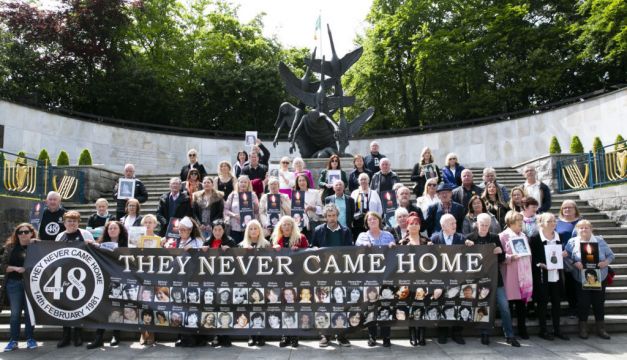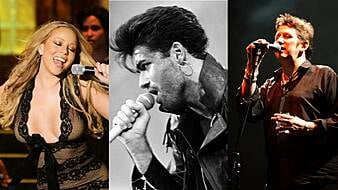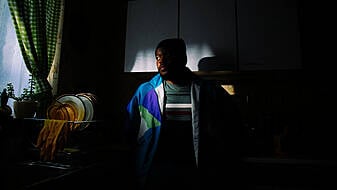A former Stardust doorman has told an inquest that there was a practice of looping a chain around the bars of exit doors after unlocking them to "trick" people into believing the doors were still locked.
Francis Kenny, who was 22 at the time of the fire that killed 48 people when it swept through the nightclub in the early hours of February 14th, 1981, agreed with a barrister acting on behalf of certain families of the victims that a person would reasonably assume they needed to check another exit because one with a chain was locked.
The jury in the Dublin District Coroner’s Court heard that around 22 bodies of the deceased were found near two of the exits.
Mr Kenny, who was off duty on the night of the fire, gave evidence on the previous day of the inquest that doormen were directed to open the exit doors by unlocking padlocked chains and then hanging the chain on one bar to make it appear as if the door was still chained.
Safety training
Continuing his evidence, Mr Kenny confirmed to Des Fahy KC that he received no safety training or training in the event of a fire emergency.
“You didn’t receive safety or fire or evacuation training but were given a demonstration on how to trick teenagers that a fire exit was locked?” asked Mr Fahy.
“That is correct,” replied Mr Kenny.
Mr Kenny went on to confirm that doormen at the time were of the opinion that there were not enough of them to cover all of the areas of the Stardust, and this meant that there were not enough door staff to position one at each exit.
“There are multiple testimonies from people trying to get out from exits four and five who were unable to do so because of the chains on the doors,” said Mr Fahy.
“I wasn’t there, so I don’t know what way they were on the night,” replied the witness.
Mr Fahy asked him if the policy regarding the chaining of the doors changed during the time he worked there, to which Mr Kenny replied that he was not aware of any policy change.
“There was a direction for the doors to be kept locked until later in the evening,” said Mr Fahy.
“I never heard of that,” replied Mr Kenny.
“You may be unique among the doormen not to know that policy,” said Mr Fahy.
“I’m answering honestly about what I know, I never heard it,” replied the witness.
Doors
Mr Kenny confirmed that a photograph he was shown of an exit door with a chain and padlock on it, which was not taken on the night of the fire, was a fair representation of how he was shown to deal with the doors after they were unlocked.
“This is a trick. Those doors look locked,” said Mr Fahy.
“They do look locked, yes,” said Mr Kenny, going on to agree with Mr Fahy that in an emergency situation, a person presented with that would reasonably conclude that those doors were locked and would need to check another exit.
“This was a practice that created catastrophic outcomes around exits four and five. We estimate the bodies of 22 of the victims were found in a parabola around exits four and five,” said Mr Fahy.
Mr Fahy asked him if there was any system whereby someone would check that he had opened the doors as directed, and the witness replied that there was not.
Mr Fahy then asked him about evidence he had previously given about the morning after the fire, when Mr Kenny said he and a number of other doormen were requested to attend the premises and were informed not to speak to the press until they spoke to solicitors. At this meeting at the Stardust premises, a number of door staff were drinking alcohol provided for them, said Mr Fahy.
“Those who instruct me consider it to be grotesque that alcohol was being served to members of the door staff at a time when the examination of the scene where their loved ones had died was continuing. Did that occur to you or anyone else?” asked Mr Fahy.
“I didn’t know there was any investigation going on. I didn’t think drinking was appropriate, so I didn’t drink,” replied Mr Kenny.
Unlocking the doors
Michael O’Higgins SC, representing a number of the families, asked Mr Kenny about his earlier evidence in which he had said that, after unlocking the doors and looping the chain over the bar, the exit door could still be opened.
Mr O’Higgins said that one witness will say that they saw a man kicking the door at exit four as he could not get it open. Another said that the door only opened a few inches as it was held by a chain and padlock. Another witness said that there was a chain around the bar of a door with a lock, and they waited for two minutes for someone to open it. Someone else heard someone shouting that they could not open the door.
Concerning exit five, Mr O’Higgins said that a witness said they saw a man kicking the door but it would not open. Another witness said they grabbed the bars but there was no movement, and some people started kicking the door. Witnesses also said that there was a big chain across the door, and it took about three minutes to open it.
“In the light of those experiences, does it follow that the opinion you expressed that it would be very easy to push the bar down and get out, is it now the position that you wouldn’t stand over that?” asked Mr O’Higgins.
Mr Kenny said he was informed at the time that looping the chain over the bar did not stop the door from opening, but he never tried opening the door.
Mr O’Higgins put it to the witness that on the basis of what he had just heard, did he agree it was not safe.
“Absolutely, yes,” replied Mr Kenny.
Mr Kenny went on to confirm to Séan Geurin SC, representing a number of the families, that exit three would be open to allow the DJ to enter, but when he was in there was no need for the door to remain open.
In response to questions from the jury, Mr Kenny said that, as far as he was aware, the door keys were kept in the cash office, and he did not know if any duplicate keys were available.







